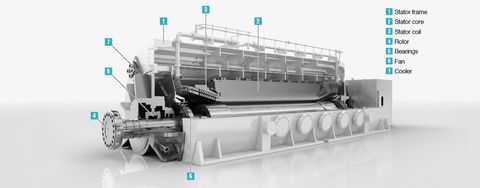Soundproofing works through techniques that absorb, dampen, or block sound waves. These can include structural changes (like adding insulation or double-pane windows) or surface modifications (such as acoustic panels or carpets). The goal is to create a quieter and more controlled environment, improving quality of life and work performance.

Why Soundproofing Matters in Today’s Living and Working Spaces
The modern lifestyle has brought more exposure to noise pollution, especially in cities. Soundproofing is more important today due to several factors:
- Remote work boom: Millions now work from home (WFH), making a quiet environment essential for video calls, concentration, and productivity.
- Mental health awareness: Noise is a stressor. Persistent exposure can lead to anxiety, poor sleep, and even cardiovascular problems.
- Regulatory standards: Many residential and commercial buildings must now meet certain noise insulation standards.
- Open-plan offices: These layouts often have poor acoustics, affecting focus and communication.
Key groups affected include:
- Urban residents in noisy neighborhoods
- Work-from-home professionals
- Families with infants or school-going children
- Healthcare providers running clinics at home
- Recording artists and content creators
Noise problems it solves:
- Street traffic and construction noise
- Noisy neighbors or shared walls
- HVAC and appliance hums
- Echoes in large empty rooms
- Sound leakage in home offices or meeting rooms
Recent Trends and Developments in Soundproofing
In the past year, soundproofing solutions have become more sophisticated and accessible. Some notable developments include:
- Eco-friendly materials: Products made from recycled cotton, hemp, and cork have seen a surge in popularity due to sustainability awareness.
- Smart acoustic panels: Some brands introduced panels with embedded sensors and adjustable settings that adapt to noise levels.
- Increased DIY adoption: With inflation affecting renovation budgets, more homeowners are turning to do-it-yourself soundproofing like using door sweeps, thick curtains, and acoustic wallpaper.
- Higher building standards: In 2024, countries like Germany and Canada updated their building codes to include stricter soundproofing metrics for residential complexes.
Recent market research (Statista, 2024) shows a 22% increase in consumer spending on soundproofing products globally, with North America and Asia-Pacific leading the growth.
Regulations, Standards, and Building Codes That Apply
Soundproofing requirements vary by country and type of building. Key legal aspects include:
- Building codes: In many countries, especially in the EU and North America, there are minimum Sound Transmission Class (STC) or Noise Reduction Coefficient (NRC) standards for new buildings.
- Noise pollution laws: Municipal laws often regulate how much noise can escape from a property. In the UK, for example, local councils can take action against neighbors if noise exceeds certain decibel levels.
- Office regulations: OSHA in the U.S. limits noise exposure in work environments to 90 dB over an 8-hour period.
- Rental agreements: Landlords may require or offer soundproofing for tenants, especially in multi-unit residential buildings.
Government incentives:
- Some regions offer home improvement tax credits that can apply to energy-efficient soundproof windows and doors (Canada’s Greener Homes Grant, for example).
Useful Tools, Products, and Resources for Effective Soundproofing
Whether you're looking to soundproof a home studio, bedroom, or workspace, there are a number of useful resources:
Materials and Products
- Acoustic foam panels: Best for echo reduction in offices or studios
- Mass Loaded Vinyl (MLV): Heavy, flexible material used behind drywall
- Weatherstripping and door sweeps: Simple, cost-effective for sealing gaps
- Double-glazed windows: Help block external noise
- Green Glue: Acoustic sealant that converts sound energy into heat
Apps and Calculators
| Tool | Purpose |
|---|---|
| Decibel X (iOS, Android) | Measures room noise level |
| myNoise | Generates masking soundscapes |
| Soundproof Cow Calculator | Helps estimate how much material you need |
| Acoustic Modelling Software (Room EQ Wizard) | For advanced acoustic analysis |
Websites and Services
- Acoustical Society of America (acousticalsociety.org) – Research and guidance
- SoundproofingCompany.com – Planning resources and materials
- HomeAdvisor – For finding local professionals with soundproofing experience
- YouTube Channels (like Soundproof Guide or AcousticsInsider) – DIY tutorials and reviews
Frequently Asked Questions
Q1. What is the most cost-effective way to soundproof a room?
The most affordable methods include using heavy curtains, sealing door and window gaps, placing rugs or carpets, and adding bookshelves or furniture to absorb sound. These DIY strategies are great for renters or budget-conscious users.
Q2. What’s the difference between soundproofing and sound absorption?
Soundproofing blocks noise from entering or leaving a room (e.g., adding mass to walls), while sound absorption reduces echo and improves sound quality within a room (e.g., using acoustic foam).
Q3. Can I soundproof a room without construction?
Yes. You can use non-invasive solutions like acoustic curtains, door seals, under-door draft blockers, wall-mounted panels, and noise-canceling devices without major construction work.
Q4. Is there a way to measure how well my room is soundproofed?
Yes. You can use a decibel meter app like Decibel X to compare outside and inside noise levels. Professional tools like STC ratings and NRC measurements are more accurate but usually used by contractors.
Q5. Does soundproofing add value to a property?
While it might not directly increase a home’s resale price, it can make the property more attractive, especially in noisy neighborhoods or urban locations, thus improving marketability.
Conclusion
Soundproofing is no longer a luxury—it’s a practical solution for today’s noise challenges. Whether you're setting up a peaceful home office, designing a productive open workspace, or just aiming for better sleep, effective soundproofing can significantly improve daily life. With various materials, tools, and methods available—many of which are DIY-friendly—anyone can take steps to create a quieter, more comfortable environment.






